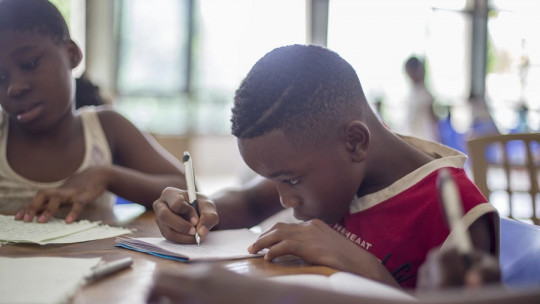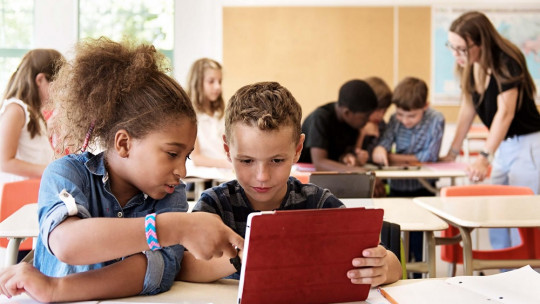
Initially, special schools were considered “catch-alls” where there were students of a very diverse nature who could not be attended to in the ordinary school. Thus, the use of the term “special schools”, whose connotation was linked to a categorical and watertight conceptualization with classifying and/or segregating purposes, fell into disuse, to move on to the use of the concept “special educational needs” (SEN).
This phenomenon understands the student’s circumstances as a dynamic and interactive learning process, to which the school must adapt the teaching to the individual characteristics of the student (abilities, limitations, learning rates, etc.). With this change, students with Special Educational Needs is welcomed into the regular classroom and integrated with the rest of the students with the purpose of enhancing their personal and intellectual development.
Special Educational Needs
The first contributions to the conceptualization of SEN were not made until the last decade of the sixties, although it was in 1974 when Mary Warnok published a report on the state of Special Education in Great Britain. This fact was the trigger for the application of some first measures in the educational system at a global level, mainly:
Training and improvement of teachers
This was done in the sense of guiding this group to obtain greater competence and specific knowledge about the concept of Special Education and the implications of its application. The initiative aimed to provide all teachers with a series of official qualifications lasting one year and a complementary financial incentive.
Anticipation of special educational intervention
Specifically, in students with SEN under five years of age, increasing the total number of nursery and nursery schools for children with more pronounced educational difficulties.
Expanding the range of action
He also went to work with students with SEN between sixteen and nineteen years old once compulsory schooling has finished in order to offer them the corresponding help and guidance in order to consolidate greater social and economic integration in adult life.
Educational inclusion
The concept of “integration”, which initially represented a very significant advance in terms of attention to all students with SEN, subsequently lost its incipient essence. Thus, this phenomenon began to be linked to segregation and the distancing of schoolchildren. with learning difficulties or some type of physical or mental impairment compared to children without these characteristics.
In this way, the integration process was understood as a type of differential education, where the educational curriculum was applied in a unique way The result was again and paradoxically a distancing between the two classes of students.
In contrast to what was stated above, the term “inclusion” replaces the previous one, definitively granting the meaning that was originally intended to be given to the previous nomenclature. Inclusion manages to disintegrate the individualistic and perniciously taxonomic vision to achieve the priority objective of offer quality and equal education for all students regardless of whether it presents a deficit or limitation.
In order to unify both the aspects related to the school environment and those corresponding to the community area in a global way for each student, this methodological and conceptual change is made.
In inclusive education, each student is accepted and valued for their particularities, circumstances and abilities, and they are equally offered the same learning opportunities and the necessary support to enhance their development at the highest qualitative level.
This new model, therefore, is limited to a more cooperative environment, to the detriment of the competitiveness more typical of the integration stage.
Principles of attention to diversity
Attention to diversity is defined as a new way of understanding teaching, which is based on the principles of:
Quality education
That is, the guarantee of offering equal educational opportunities to all students once assumed the existence of diversity in this group which is inherent and natural in human beings.
The shared effort
It refers to atmosphere of collaboration and commitment between the parts that make up the educational community.
Convergent European educational space
In this context shared objectives are established and agreed upon within the educational system.
Under this concept, the “Equity in Education” Law is proposed, which aims to provide students with SEN with a series of various types of support that guarantee a quality educational learning process. These aid refer to both material and personal resources granted to centers and families, the development of specific educational programs and flexibility in each of the stages of the educational system.
The ultimate goal of this proposal is to show a greater personalization in the teaching process adapted to the particularities of each student.
Pedagogical intervention in attention to diversity
In order to achieve the objective of inclusive education and follow the principles of attention to diversity, the following strategies are proposed from the field of psychopedagogy to be applied in the classroom context:
Work in pairs or small groups
This resource has the advantage of encouraging both interaction between equals and the sharing of joint experiences, as well as allowing the contributions of a certain student to complement those offered by another, in such a way that greater enrichment is achieved during learning..
The possible effect of “settling into the deficit” that the most limited students may have must be taken into account. in the event that the teacher’s demand is not equitable for all students equally.
Work in corners
Dividing the classroom into different stations or learning corners enables greater dynamization and active participation in the learning process since all students go through all the stations, whose activities to be carried out have been selectively prepared by the teacher in advance.
Flexible groups
The fact of dividing class groups based on educational needs, level/speed of learning or the particularities of each student allows for greater use and greater personalization of teaching.
A negative aspect in the application of this resource is the possible appearance of comparative attitudes toward the characteristics of other classmates belonging to a different subgroup.
The workshops
In this case, working groups are formed based on the interests and concerns of the students This resource has the advantage of being motivating for children, although it must be ensured that at one time or another, everyone must complete all the workshops to ensure more complete learning.
In this methodology, the teacher acts as a guide which favors the expression of creativity, initiative and greater work autonomy.








